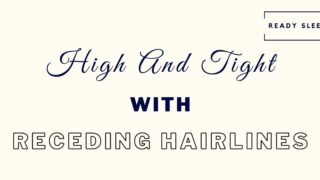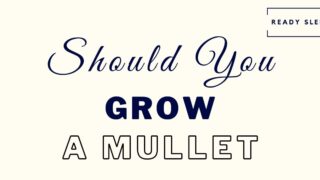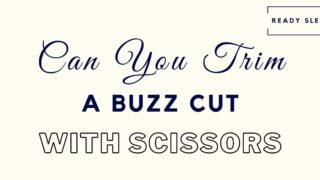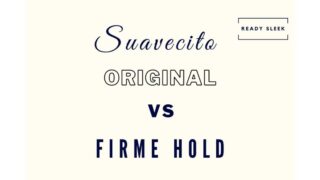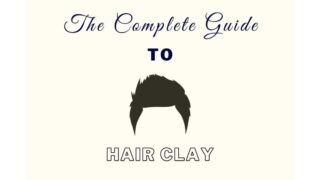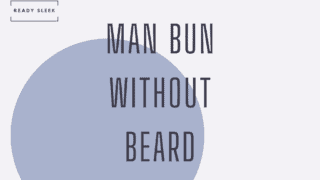Before you grab that clipper, read this. Trimming short can be a liberating experience but shouldn’t be done before you know what you’re getting into. You’re about to learn everything you need to know about the number 8 haircut.
Let’s get to it.
What Does The Number 8 Haircut All Over Look Like?
It looks like this:

As you can see, it’s short but not that short.
This does bring about many different benefits, the main one of which being just how low maintenance it really is.
It’s short enough to make washing and drying super quick, adding very little to your morning routine.
But it’s long enough to allow you to style it as well. Because of this, it’s a lot more versatile than shorter lengths such as the number 4 and even longer buzz cut lengths.
Don’t get me wrong – you can’t do a whole lot with it. But you can do some things with it.
For example, the number 8 haircut all over is usually long enough to form a small quiff or even a subtle comb over.
There’s no way you’ll be slicking it back, for instance, but you probably don’t want to do that in any case.
It’s important to note that while it’s easy to keep a #8 haircut tidy, it does still require some grooming. It isn’t quite as “set it and forget it” as a shorter length may be.
You’ll want to ensure flyaways and strays are flattened and you may also want to run a comb through it if you feel it’s long enough to benefit from it.
It’s worth mentioning that the number 8 length on top is also great for short styles where the sides and back are trimmed down short.
The “short back and sides” is an obvious choice. But you’ve also got crew cuts, butch cuts, high and tights, and others.
While these styles are all short, the top is left longer than the sides and back in some way.
The number 8 length is great for use as that longer length on top. You could combine it, for instance, with a #3 or #4 length at the sides and back.
A significant benefit of trimming the back and sides shorter than the #8 length on top is that it produces a tapered appearance. Having everything trimmed down to a #8 produces a sort of fuzzball appearance, especially as it grows out.
Because of this, it’s actually a pretty idea to taper the sides and back, at least a little shorter than the hair on top.
How Long Is The Number 8 Haircut
The number 8 haircut is 25mm (1 inch) long and is trimmed using a #8 clipper guard. This length is often the longest that most mainstream clippers will allow the user to trim down to.
Remember – not all clippers will come with a #8 clipper guard. Many of the cheaper ones will only come with clipper grades 1-4.
So, if you’re keen on trimming a #8 DIY, ensure that the clipper you buy will allow you to do it.
The main reason why many clippers don’t come with one is that it isn’t one of the more common lengths to trim down to.
Clippers are usually used to either clip everything down (eg. an induction-style buzz cut), or to clip down the sides and back while the top is scissor-cut.
When clipping everything down, it’s more common to go for a shorter length such as a #3 or #4.
The same goes for the sides and back. Many modern styles where the top is left long or scissor cut have the sides and back clipped down to a short length such as a #3 or #4.
My point here is that a #8 clipper guard isn’t used very often. This is probably the main reason why a lot of cheaper clippers don’t come with it.
But if you know that the number 8 length is the one you want to go for, pick your clipper wisely.
Again, it has its benefits – but tapering the sides and back is often the best way to go and you’ll still probably end up using those shorter clipper guards as well in order to achieve this in any case.
The Number 8 Haircut With A Fade
The number 8 haircut with a fade consists of a number 8 length on top, with the back and sides incrementally increasing in length from bottom to top. The faded effect occurs due to the blending of different lengths at the sides and back with no harsh lines.
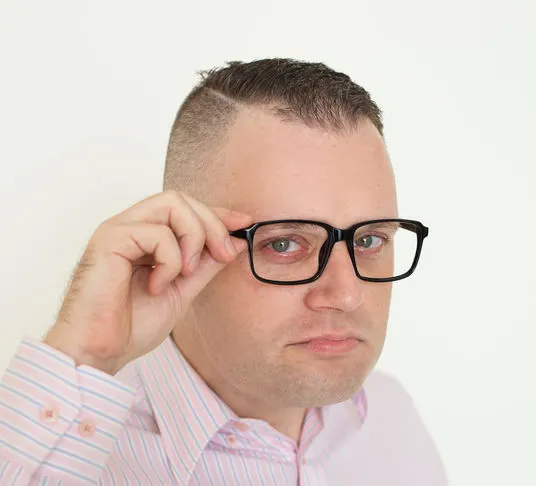
Image From 123RF
Fades are popular for a reason.
For one, they can make a short and simple style such as a #8 haircut a lot more interesting.
Barbers are pretty artistic with them these days. There are many different variations of “fades” ranging from drop fades to skin fades, and so on.
They can get pretty confusing as sometimes the same fade is referred to by different names.
To keep things simple, all you need to know is how to communicate to your barber what type of fade you want with your number 8 haircut.
When doing this, you’ll need to specify how short you want the shortest length of the fade to be.
In other words, what length you want at the bottom before the hair gradually transitions into longer lengths as you go up the back and sides.
With “skin fades”, the shortest length is literally shaved. With number 1 fades and number 2 fades, this shortest length is a #1 and a #2 length respectively.
You’ll also want to let the barber know how high up the back and sides you want this transition to occur.
With “low” fades, the transition occurs around half an inch above the ear.
With “high” fades (a.k.a temple fades), this transition starts around the level of the temples.
With “mid” fades, the transition happens approximately midway between these two points.
The question remains – why go for a fade instead of simply trimming the sides and back down shorter and not fading them?
After all, even if you didn’t fade the sides, they’d still be shorter than the number 8 length on top – the tapered effect should still be present and effective.
There’s no reason to go for a fade unless you truly like the way it looks. Fades can be more eye-catching than simple short back and sides look.
If you feel as though a simple #8 haircut is a little too bland, a fade can be a good way to make it more attention-grabbing.
The higher up the transition occurs and the shorter the shortest length of the fade is, the more attention-grabbing the fade will be.
For example, a number 8 with a high skin fade will be more eye-catching than a number 8 with a low number 4 fade.
It’s really up to you how subtle or not-so-subtle you want to go with it.
The Number 8 Haircut On The Sides
The number 8 haircut on the sides is a style where the top is left long and scissor-cut, while the sides and back are clipped down using a #8 clipper guard.
With modern styles, it isn’t the most common length to trim the sides and back down to. Many choose shorter lengths for this purpose.
But when the hair on top is especially long – for example, a pompadour or a slick back – clipping the sides and back down to a #8 will still look pretty short in comparison.
This should be short enough to produce a tapered appearance when the hair on top is long enough in contrast.
There’s quite a good chance, however, that once you clip down to this length, you may want to go even shorter at the back and sides.
You may find that the sides just look too full no matter how long the hair on top may be. This can make the face look wider or rounder than you may like.
If this is the case, go down further on the sides. You can do so incrementally, one clipper grade at a time.
A #7, then a #6, and so on – until you find a length where you get enough of a tapered appearance to suit your preferences. Once you do, you’ll find that the face looks slimmer and the jawline more chiseled.
At this point, it’s worth mentioning that trying to DIY this sort of thing is never ideal. Ask a barber to do this for you.
They’ll also often be able to give you tips as to what lengths might be best for your sides and back, taking the texture and length of the hair on top into account as well.
To sum that up – yes, you can clip the sides and back down to a number 8. But many would probably find that a shorter length would be more aesthetically pleasing.
How To Do A Number 8 Haircut
Here’s a quick, step-by-step routine for trimming a number 8 haircut all over if you’re looking to DIY it.
All you’ll need is a pair of clippers that comes with a #8 clipper guard. Remember, not all of them do.
Other than that, you’ll need a bathroom mirror and ideally a handheld mirror as well to help you clip down the back.
1. Prepare The Clippers
Prepping the clippers before the trim is crucial, no matter what length you’re trimming down to.
It’s pretty simple – you’ll want to make sure it’s charged (if it’s cordless), oiled, and cleaned.
Charging the clippers will ensure the motor has no trouble keeping the blades moving efficiently and gliding through the hair without tugging.
Oiling the blades should reduce friction between the blades, leading to a more efficient and effective trim as well.
Most clippers come with a little bottle of lubricating oil – if it doesn’t, you can easily get some clipper oil online separately.
Finally, cleaning the clippers by removing excess hair from around the blades should also reduce friction as well.
Again, most clippers come with a little brush for this. If yours doesn’t, a toothbrush should do the trick.
2. Wash And Dry The Hair
Clean hair is easier to clip down than dry hair, especially when we’re trimming everything down to a relatively long length like a #8.
Wash the hair and towel-dry or blow-dry it until it’s completely dry.
3. Trim The Top And Sides Down To #8
Before we start, remember – trimming the sides and back a grade or two shorter than the #8 length on top is a good way to produce a tapered appearance.
In this tutorial, I’m assuming you want to trim a #8 all over to keep things simple.
But just bear in mind that you’re more than welcome to try trimming the sides and back down to a #7 or even lower while keeping the top at a #8 if you want to.
But for now, let’s carry on.
It’s usually best to leave the back until last, simply because it’s the toughest area to do.
Clip on the #8 clipper guard and start trimming the top and sides.
You’ll want to trim against the grain for the quickest and most even trim. This means against the general direction of growth.
For the top, this will usually be backward. For the sides, it’ll be upward for the most part.
4. Trim The Back
The back is tricky because it’s tough to see.
A handheld mirror will allow you to visualize the back of the head.
Hold it in front of you and turn so your back faces the bathroom mirror. You should now be able to see the back of your head as the mirrors reflect off of each other.
If you’ve got anyone you trust that can help you do the back, it would be better. If you have to DIY it, just do your best.
The back of the head has plenty of ridges and grooves, so go slow as you move the clipper across it.
The crown area can be tough because hair tends to spiral here, growing in different directions. Have a feel of it and try to figure out the different directions.
Again, go slow – and vary the angle of the clipper in an attempt to get as even of a trim as possible in this area.
5. Clean Up The Neckline
With longer lengths like a number 8 haircut, the neckline can sometimes look untidy when it isn’t cleaned up at the end of the cut.
You don’t want it crawling toward your back.
While trying to round off or square off the neckline by yourself can be very difficult, there are templates out there that can make the process easier for you.
Here’s an example on
It’ll help you create a neckline that’s tidy, but make sure you set it at the correct height before you start trimming. Not too high.
In addition, make sure it’s straight.
Once again, if there’s anyone that you trust that might be able to help you with this bit, take them up on the offer.
At this point, have a look and feel of the hair in good lighting to see if you can spot any patches you’ve missed.
If you do, go over them with the clipper again and have another feel.
At this point, hop into the shower and wash off any excess hair.
Then, take a look in the mirror and assess your work.
Is The Number 8 Haircut Good For Balding Men?
The number 8 haircut is a good option for balding men with thinning hair. It’s short enough to make thin patches look less obvious, while also being long enough to partly cover up receding temples.
It works well because it strikes an impressive balance.
Balding men may not want to go super short like a number 2 or number 3, although these are surprisingly good at making thinning hair look less obvious.
The problem is, many men simply aren’t comfortable going that short. It’s because it sounds strange to trim hair shorter when the hair is already thinning.
However, the benefit of trimming hair short when you’ve got thinning hair is that it reduces the contrast between thin areas and not-so-thin areas.
This has the effect of making the thinner areas look fuller as a result.
While the number 8 haircut may not be as effective at producing this effect as shorter lengths such as the 2 or 3, it’s still short enough to be beneficial.
It has the added benefit of being long enough to partly cover up receding temples and also to prevent too much scalp showing through under strong lighting.
So, while shorter lengths may be more beneficial, the #8 is a good stepping stone for balding men who want to test the waters of shorter lengths before going down even shorter.
Conclusion
After reading this, you should hopefully have a much better understanding of the number 8 haircut.
It may not be the most common length to clip everything down to, but it’s definitely worth knowing about.
The length has its benefits as well as its downsides, just like any other haircut length.
Hopefully, you should now know whether it’s the length for you or not.
Enjoy.
Ready Sleek founder. Obsessed with casual style and the minimalist approach to building a highly functional wardrobe. Also a fan of classic, vintage hairstyles.

![Number 8 Haircut: Length, Styles, Fades [With Pics]](https://www.readysleek.com/wp-content/uploads/2021/09/Number-8-haircut-720x405.jpeg)
